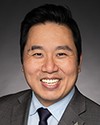That's a big question. I'll start with indigenous communities, and I'll speak to the B.C. context, because that's where we're working. B.C. has 203 first nations. To begin to understand how Trans Care BC as a program can be relevant to the communities in B.C., we've taken our time to travel, to introduce the program and to try to understand by having direct conversations with people who will show up and meet with us about the intersections of colonization and gender and how colonization has impacted gender.
One story really stands out to me. We had a meeting in a community in the north and, on the way into the meeting, someone who's quite prominent, an elder in the community, was bullied by people outside the meeting saying, “Why are you going to that gay meeting? You shouldn't go in there.” The session then became around this conversation about this idea that they come and talk about trans issues or gender diversity—one was gay—and that the community just literally didn't have safety around being queer, trans, etc. That was directly related to colonization, histories of residential schools in that community and the idea that somehow being gay was attached to possibly a sexual abuse history. It's a very complex and very local understanding.
I think all of that work needs to be really attuned and tailored to the community that it's being addressed to. Similarly with newcomers and refugee communities, people come from a particular cultural understanding of gender and gender diversity, and there are both strengths and sometimes challenges to that. There are many examples of gender diversity around the world.
I'm also a clinical counsellor. I didn't mention that. Some of my conversations with diverse young people from different cultural backgrounds ask if they know about gender diversity in their culture. There are some very good online tools and maps of the world that we can explore and look at the history of gender diversity in Thailand, for example, or other places around the world.
I don't think there's a simple answer, but it's all about dialogical engagement of the people we're working with.





